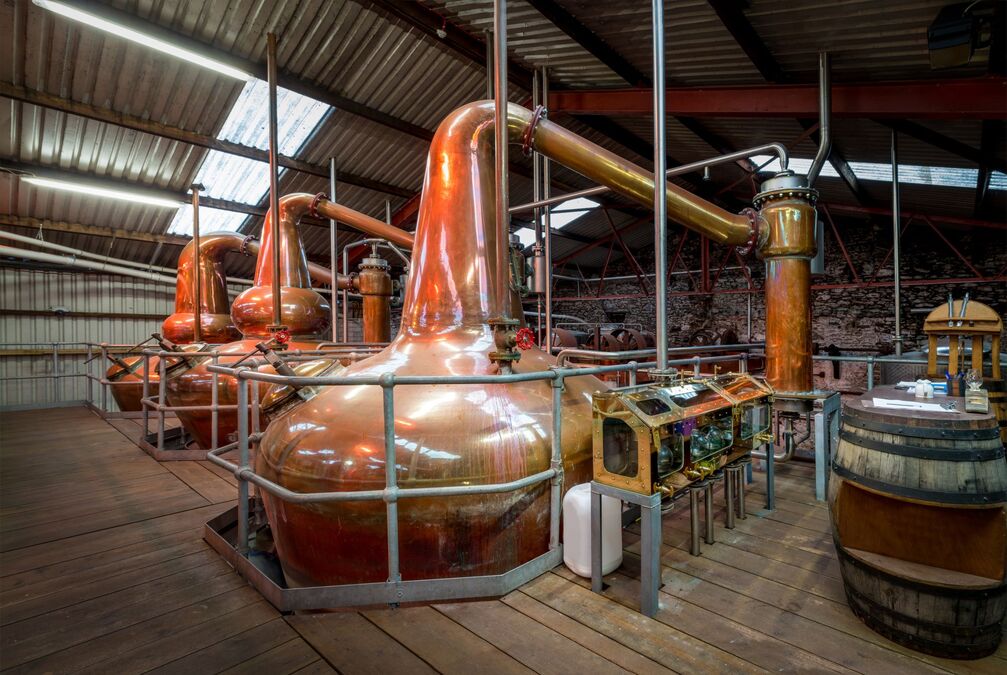Published:

Whisky distillers are eyeing new sources of energy to ease the environmental impact of Scotland’s national drink.
By Nik Willoughby
Few drinks can match Scotch whisky for its sense of place. Where the barley is grown, where the water is sourced, how the spirit is aged – all these factors affect the taste of the final dram.
Yet the same beautiful rural locations that feed into Scotch’s flavour also pose a challenge for hitting the whisky industry’s ambitious net-zero target. Distillers have pledged to reach net-zero by 2040, five years ahead of Scotland’s national target, and a whole decade before the UK as a whole.
How to heat the famous copper stills in which malt whisky is made, is a major question. At the moment, distilleries that are connected to the mains use natural gas to produce the steam that heats their stills, with a small number firing their stills directly with gas flames.
Those in more rural locations or on the islands burn fuel oil or kerosene instead. Both oil and gas produce carbon dioxide when burned, adding to global warming.
There’s no one-size-fits-all solution for Scotland’s whisky industry. Electricity could form part of the answer for smaller distilleries that can generate their own power on-site from wind turbines or other renewable energy sources.
Up until now, electricity from the national grid has been too costly – it’s between two and three times more expensive to generate heat using electricity than natural gas. The ongoing Review of Electricity Market Arrangements may finally break the link between the prices of gas and electricity, lowering the cost for distillers to harness Scotland’s abundance of electricity generated from renewable energy.
Yet grid connections pose another barrier to electrification. Standard connections often aren’t enough to power electric stills and installing heavy-duty connections can be expensive and add to the pressure on rural electricity networks.
Step forward hydrogen. Unlike natural gas, hydrogen only produces harmless water vapour when it’s burned, and so doesn’t add carbon dioxide, methane, or other greenhouse gases to the atmosphere.
Most green hydrogen is made by electrolysis, using electricity to split water into its constituent hydrogen and oxygen. It’s the same process most pupils experience as a school science experiment, but on an industrial scale.
Our colleagues at Heriot-Watt University are even developing a method to use by-products produced in distilleries for electrolysis. Other researchers are working on ways to produce hydrogen using bacteria or algae growing on by-products or by heating biomass.
Green hydrogen currently costs about six times more than natural gas or fuel oil, but it has a much higher energy density, meaning you only need about less than half the amount. On a like-for-like basis, that means hydrogen is now about double the cost of oil or gas, with prices predicted to fall as electrolyser technology improves and the renewable energy used to power it becomes cheaper.
Hydrogen is no more or less dangerous than natural gas when managed safely. But some questions still remain. Could hydrogen be piped to distilleries in the same way as natural gas through the mains, or will it need to be taken via road rankers, like fuel oil?
To help answer such questions, we’ve created iNetz+, Heriot-Watt University’s global institute for net-zero. Our university already trains many of the world’s best distillers and has close relationships with distilleries, making us ideally-placed to help the industry hit its 2040 net-zero target.
And the best bit about hydrogen for whisky fans? With most distilleries already using steam-fired stills, swapping fuels from oil and gas to electricity and hydrogen shouldn’t affect the production process – nor the taste of the finished spirit.
Nik Willoughby is professor of sustainable bioprocessing and co-lead for manufacturing and industry at iNetz+, the new global institute for net-zero at Heriot-Watt University.
Anyone interested in collaborating with the new global research institute for Net Zero and beyond – iNetZ+ can contact GRID@hw.ac.uk